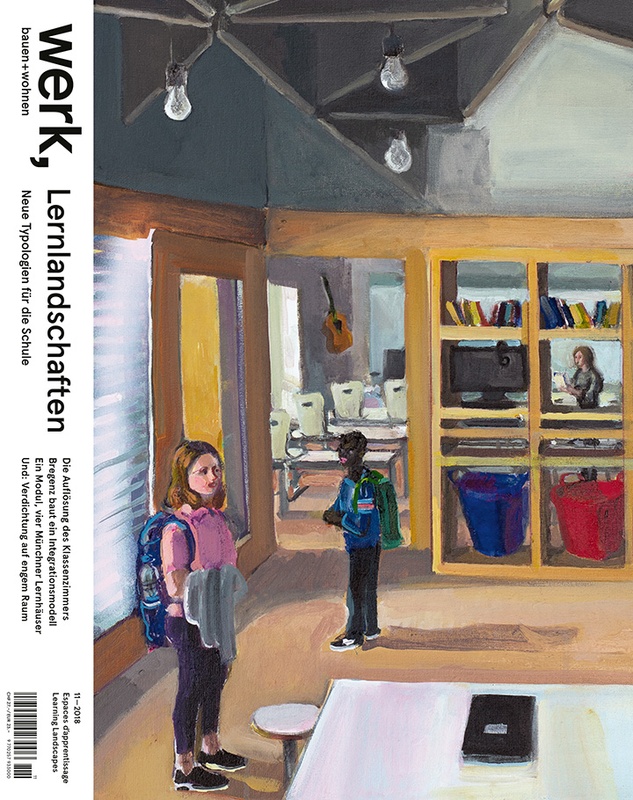werk, bauen + wohnen 11-2018

Moving away from the Classroom
The school is reinventing itself. Modern educational principles place the individual child at the centre, in school he or she acquires competences as independently as possible, with the support of a team of teachers. Parallel to this internal adaptation of the school, society’s expectations have grown, expectations about the school’s effectiveness for social integration, but also in terms of the knowledge and abilities possessed by school-leavers. The transition to the all-day school is emerging with increasing clarity. It not only relieves working parents but also promises disadvantaged children far better chances for integration and education.
Because of these changes traditional school-house typologies are coming under increasing pressure: the familiar four walls of the classroom are losing their absolute significance. Clusters and learning landscapes offer new spatial sequences, which allow working in very different group constellations that traverse the boundaries between classes. In the large school building they form manageable, protected zones with greater internal flexibility: the breaking up of the classroom means that corridors and staircases lose their traditional meaning — also as an area for architectural design: the once noisy but representative circulation spaces are now required for teaching and for supervision.
Schools that are built according to new typological principles we found mostly beyond Switzerland’s borders, in nearby Bregenz and in Munich. The examples show most clearly that new forms of teaching and schoolhouse typologies function well above all when they are developed and supported by the school itself through participative discussions. This requires rethinking on the part of those who commission schools and by architects — and even has an influence on the way that competitions are run. Precisely because in Switzerland school building is regarded as one of the most important disciplines in architecture, it is decisive that the process should be opened so as to integrate the knowledge of educationalists. This requires a willingness on all sides to find a joint language and, beyond the aesthetic component, to work on new spatial solutions. — Daniel Kurz, Tibor Joanelly